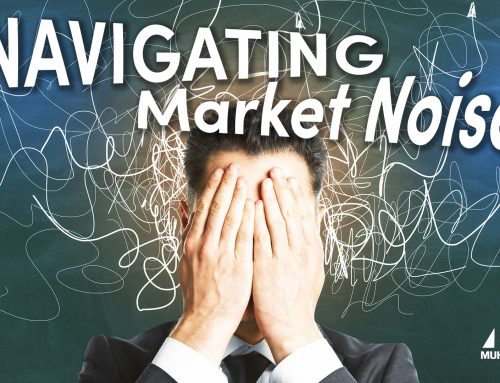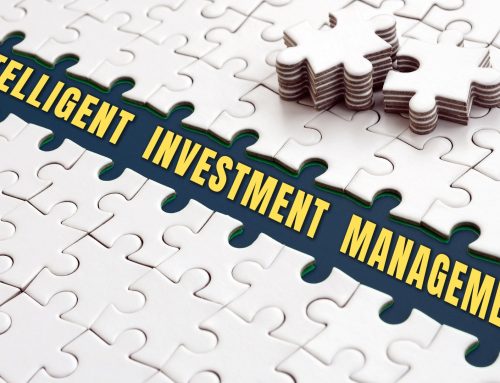
Thoughts On: Active and Passive Investing
I had the opportunity to talk with students in the Finance Department at Duquesne University about Active and Passive Investing. We covered a LOT of ground in a short period of time and ran into the problem of trying to drink from a fire hose. So, I’m writing on the topic in the hope of a more coherent presentation.
The topic of Active and Passive Investing suffers from a severe bootstrap problem because each term has multiple definitions, the concepts have changed over time, and you keep having to go one level deeper to make sense of things. It’s fascinating, but it’s easy to get lost in the minutia[1].
So, let’s start at the beginning. The purpose of investing is to make money, to grow assets— much as the purpose of farming is to grow food. Like farmers, investors have to put seed money to work while acknowledging there is a CHANCE of losing that seed money and having to start over. Active and Passive are broad categories of ways to earn/increase returns and lower the chance of losing money. And tons of ink have been spilled explaining how and why one is better than the other. “Active VERSUS Passive” is the usual headline.
The debate is meaningless and immaterial. Both philosophies work IF you understand them and apply them consistently. Neither works if you don’t, and you can lose LOTS of money switching back and forth between them.
In my opinion, passive investing is for those who don’t know a good company from a bad one, claim they CAN’T know, or that it doesn’t matter if the company is any good or not. Passive investing boils down to owning a little bit of everything forever (subject to periodic “rebalancing.”) Some of the key, unspoken, assumptions of passive investing are that risk is best and only measured by Beta, non-correlated investments remain non-correlated, markets are always rational, and the recent past will last indefinitely into the future. If you are passively investing in a pie chart of index funds and DON’T understand what I just said I encourage you to read some of the resources I mention in the footnotes.
Active investing splits into those that think they CAN tell a good company from a bad one (“stock pickers”), or those that just like to trade a lot (in and out) using some timing or trend following model (“momentum investors,” for example). There’s a further split among “stock pickers” into those that think some companies are so good it doesn’t matter what you pay for them (“growth investors”) and those that think you can turn a good company into a bad investment if you pay too much for it (“value investors”[2]). I’ve mentioned the key assumptions for the active stock picker. For the momentum-investor model, the investor assumes he can recognize patterns and timing and move in and out ahead of the crowd.
If you have been paying any attention to Muhlenkamp at all, it should be no surprise that we are active, stock picking, value money managers.
Again, all of these strategies, and many others, can and do work. The difficulty comes from the implementation of those strategies. We are hard wired to be terrible investors[3]. Evidence for this comes from a company called DALBAR that sells a report titled “Quantitative Analysis of Investor Behavior” and, also, in the “Capital Share Transactions” page in a mutual fund annual report. Put those cash flows alongside the performance table of the fund showing returns by calendar year. Money seems to always follow performance, which means the INVESTOR is not getting the same performance as the INVESTMENT.
So, which one to choose, Active or Passive? It doesn’t matter. Learn enough about both of them that you can determine which one you can sleep with at night when it is NOT working. (Nothing works all the time and will do worse and last longer than you expect). Recognize there are NO risk-free investments, you just have to choose which risks you can live with. For short-term and emergency spending needs, I suggest using Beta as your risk measure; short-term investments (1 year or less) should not fluctuate in value. For longer-term investments (3 years or longer) the probability of losing purchasing power over time due to taxes, inflation and spending is your primary risk. The investments can fluctuate in value as long as they are in an upward trend over time. Between 1-3 years depends on your particular circumstances.
Please let us know if we can help.
[1] If you really want to get into the Passive minutia, start with Harry Markowitz and his article “Portfolio Selection” in The Journal of Finance in 1952. Then read up on the Capital Asset Pricing Model from the 1960s and ‘70s, and the Efficient Market Hypothesis from Eugene Fama and Burton Malkiel in the 1970s. [2] For the Active side, refer to the investment managers on Ron Muhlenkamp’s “Reading List”, Phil Fisher, Gerald Loeb, and Ben Graham from the 1930s through the 1960s, Peter Lynch starting in the 1980s, and Warren Buffet’s Berkshire Hathaway Annual Reports starting in 1995. [3] Read any of the current texts on “Behavioral Investing” or “Behavioral Finance.”The opinions expressed are those of Tony Muhlenkamp of Muhlenkamp and Company and are not intended to forecast future events, guarantee future results, or offer investment advice.








